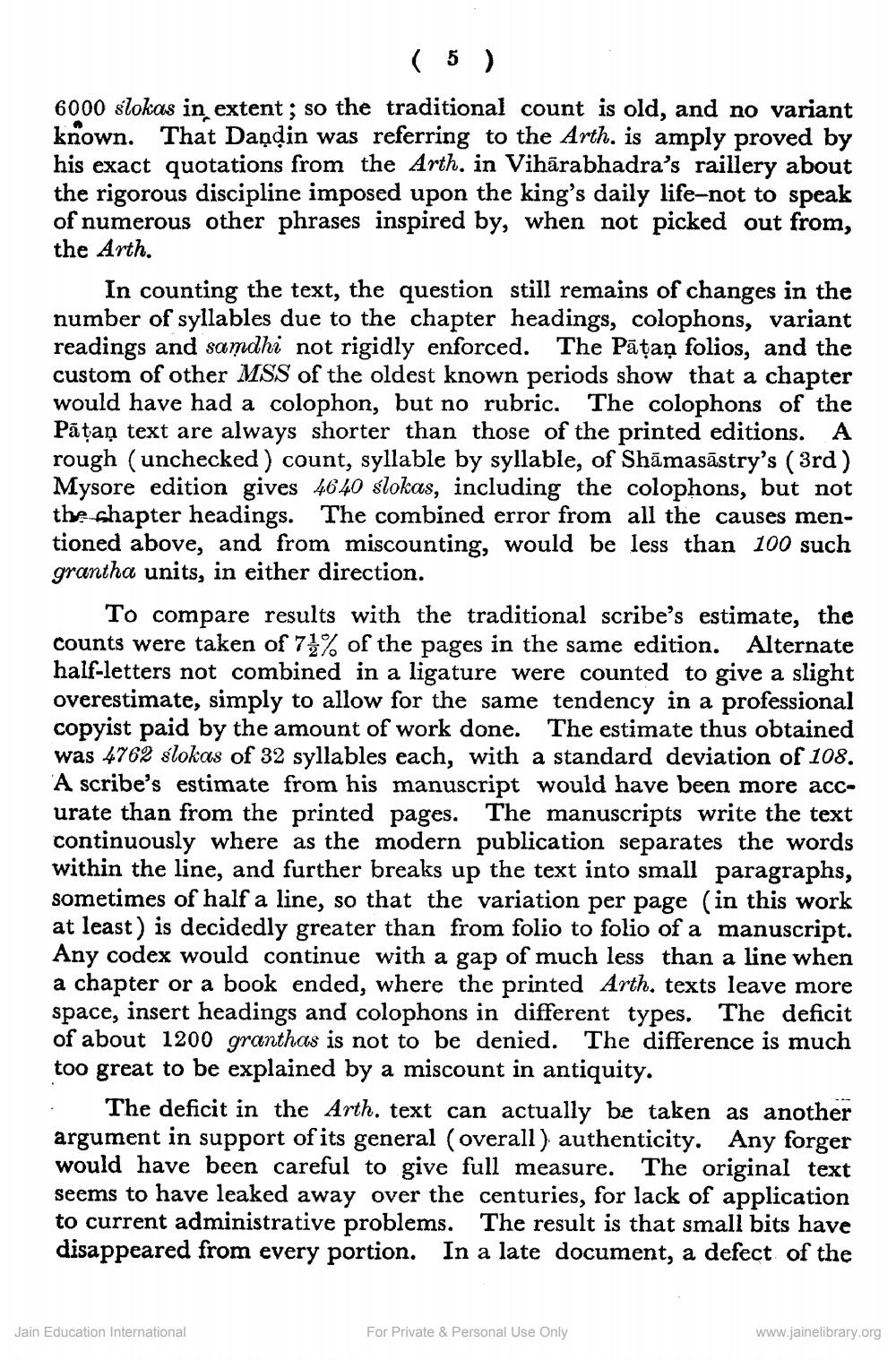________________
( 5 ) 6000 slokas in extent; so the traditional count is old, and no variant known. That Dandin was referring to the Arth, is amply proved by his exact quotations from the Arth. in Vihārabhadra's raillery about the rigorous discipline imposed upon the king's daily life-not to speak of numerous other phrases inspired by, when not picked out from, the Arth.
In counting the text, the question still remains of changes in the number of syllables due to the chapter headings, colophons, variant readings and samdhi not rigidly enforced. The Pāțaņ folios, and the custom of other MSS of the oldest known periods show that a chapter would have had a colophon, but no rubric. The colophons of the Pāțaņ text are always shorter than those of the printed editions. A rough (unchecked) count, syllable by syllable, of Shāmasāstry's (3rd) Mysore edition gives 4640 slokas, including the colophons, but not the shapter headings. The combined error from all the causes mentioned above, and from miscounting, would be less than 100 such grantha units, in either direction.
To compare results with the traditional scribe's estimate, the counts were taken of 73% of the pages in the same edition. Alternate half-letters not combined in a ligature were counted to give a slight overestimate, simply to allow for the same tendency in a professional copyist paid by the amount of work done. The estimate thus obtained was 4762 slokas of 32 syllables each, with a standard deviation of 108. A scribe's estimate from his manuscript would have been more accurate than from the printed pages. The manuscripts write the text continuously where as the modern publication separates the words within the line, and further breaks up the text into small paragraphs, sometimes of half a line, so that the variation per page (in this work at least) is decidedly greater than from folio to folio of a manuscript. Any codex would continue with a gap of much less than a line when a chapter or a book ended, where the printed Arth. texts leave more space, insert headings and colophons in different types. The deficit of about 1200 granthas is not to be denied. The difference is much too great to be explained by a miscount in antiquity. · The deficit in the Arth. text can actually be taken as another argument in support of its general (overall) authenticity. Any forger would have been careful to give full measure. The original text seems to have leaked away over the centuries, for lack of application to current administrative problems. The result is that small bits have disappeared from every portion. In a late document, a defect of the
Jain Education International
For Private & Personal Use Only
www.jainelibrary.org




